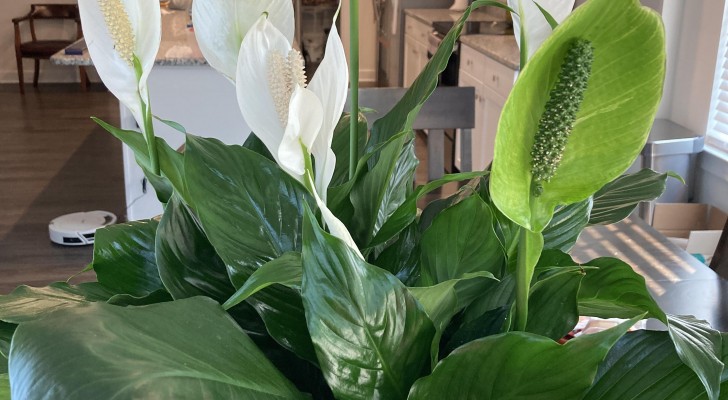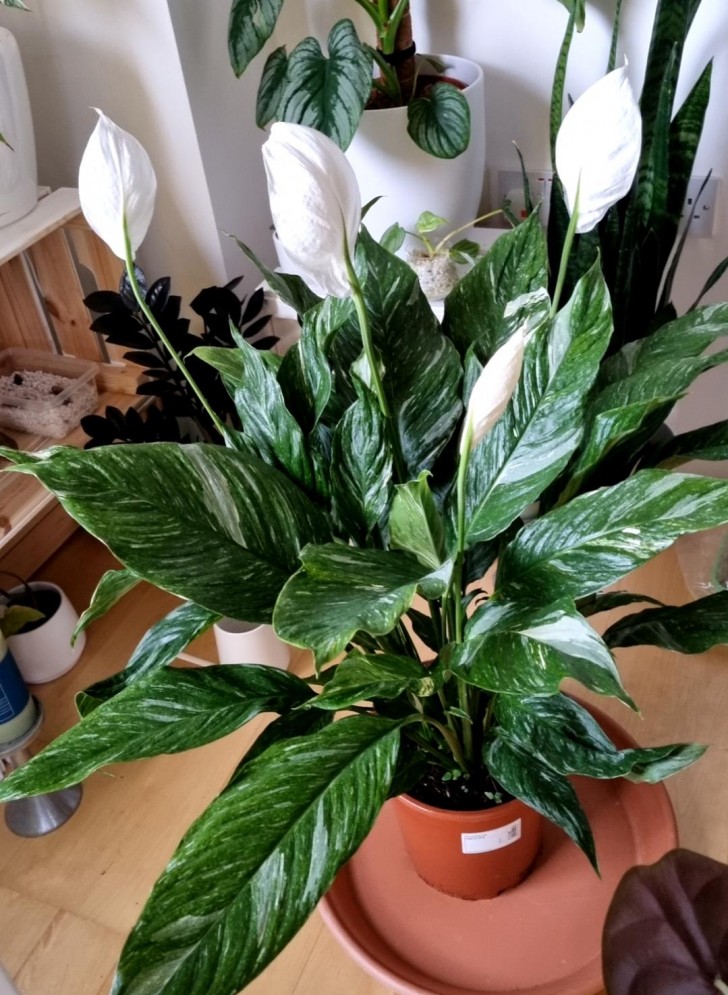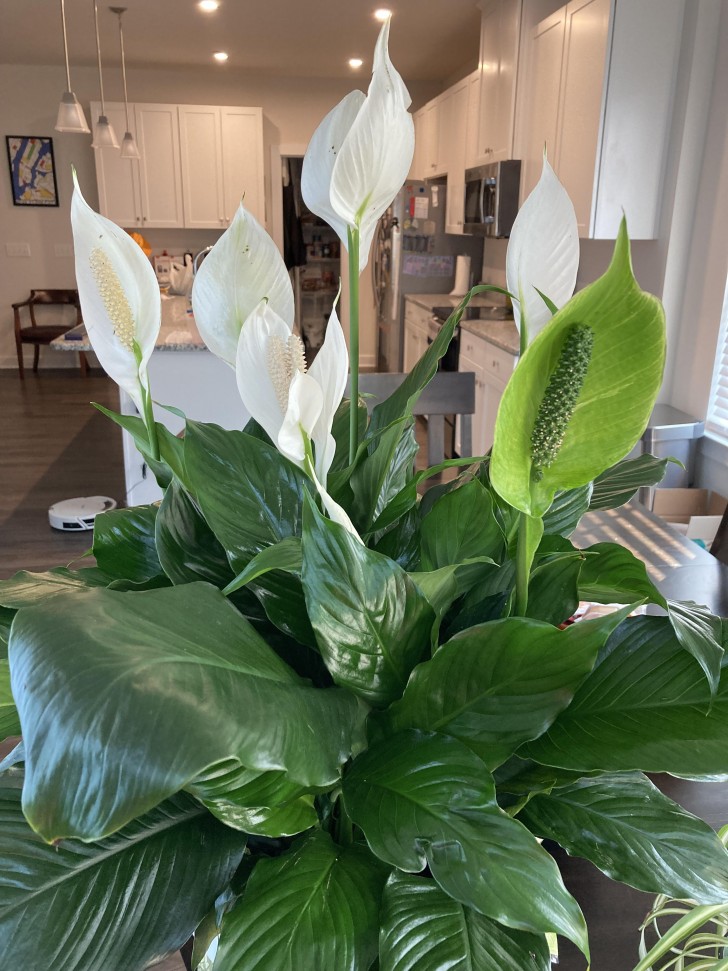Caring for a spathiphyllum: a brief guide to growing the Peace Lily

The Peace Lily, or Spathiphyllum, is one of the most popular indoor plants, not only for its beauty but also for its incredible ease of cultivation.
Characterized by large, pointed, intense green and glossy leaves with very visible veins, this plant grows directly from the rhizome. However, its most distinctive feature is the crown of white flowers, which are actually modified leaves called spathes.
Native to Central America, this plant comprises about 30 species and is known for its air-purifying capabilities and trapping harmful substances. Studies have shown that its leaves absorb xylene, toluene, trichloroethylene, formaldehyde, and benzene. For this reason, it is widely cultivated in apartments and is often given as a symbol of good wishes for special occasions such as births, weddings, new jobs, or moving into a new home.
The Peace Lily is also capable of clearly communicating its needs, making it easier for us to take care of it. Below, we provide a brief guide to its cultivation:
Spathiphyllum cultivation

The Peace Lily should be placed in a pot at least twice the size of its root ball and repotted every 2 years in spring, when indicated by its yellowing leaves. It is also suitable for hydroponic cultivation, provided the roots remain above the waterline, perhaps resting on a layer of pebbles or expanded clay from which they can absorb water. It requires a bright location with indirect sunlight or in partial shade, at a temperature not lower than 18 degrees Celsius.
Thriving in a very humid climates, the Peace Lily is suitable for kitchens and bathrooms. Constantly mist its leaves to maintain the proper humidity levels. Water it moderately, and it will indicate the need for water by curling its leaves downward.
Fertilization is necessary only during the flowering season, from March to October, once a week with liquid fertilizer.
To propagate more plants, divide the root clump during the repotting procedure.
Spathiphyllum varieties

Thanks to hybridization, there are numerous varieties of this beautiful houseplant available, distinguished by the variegation of their leaves, size, and the color of their spathes, ranging from white to gold. Some varieties are particularly appreciated for the characteristic and intense fragrance of their flowers. The most common species include:
- Spathiphyllum wallisii: Originating in Panama, it is known for its considerable size, ranging from 50 to 120 centimeters, with a yellowish inflorescence protected by a white spathe on a 50 cm peduncle.
- Spathiphillum floribundum: Native to Colombia, Ecuador, and Peru, it can reach up to 2 meters and has greenish spathes.
- Spathiphyllum So Chico: This variety has white flowers that emit a vanilla fragrance, especially in the morning.
- Spathiphyllum friedrichstalii: Smaller in size, ranging from 30 to 60 centimeters, it features large inflorescences similar in size to the leaves, which also emit a pleasant fragrance.
Now you just have to choose your favorite!